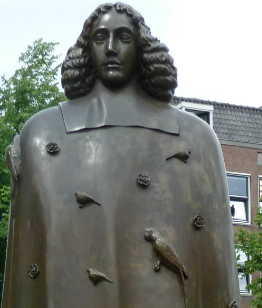
A tale of two cities
We’re off again on our search for Europe’s soul on the Heritage Tour. From seven nations, we have started our discovery trip seeking clues as to what gave Europe her DNA, and how the inhabitants of the western peninsula of Eurasia created western civilisation.
Our starting point has been the Dutch city of Utrecht, in my opinon the best single place to see evidence of the christianisation of the Romans, Copts, Irish, Anglo-Saxons, Franks, Friesians and Vikings. That’s a significant sampling of the European peoples who all experienced the same megashift in worldview as they embraced the story of Jesus and the Bible, rejecting their polytheistic paganism.
Ironically, many lights went on in Europe during the so-called Dark Ages, while many lights went out centuries later with the so-called Enlightenment.
To observe this latter phase, Amsterdam is an excellent classroom. Early on in our tour, we visit the Dutch capital which in the 17th century considered itself the leading city of the world.
It was the centre of the world’s most powerful trading empire, home harbour of the world’s most powerful navy, and embarrassingly rich for its Calvinistic citizens.
For since 1578, Amsterdam had been Protestant. The twenty monasteries that had served the inner city in social and spiritual services were turning into orphanages, libraries, university faculties, and, in the case of the Paulist Brothers Cloister, into the headquarters of the VOC, East Indies Company.
Divorce
And that is where we can see the beginnings of the secularisation of Europe. Bizarre as it may seem, Protestantism may have unintentionally encouraged the rise of atheism in Europe, as Alistair McGrath explains in his book, The Twilight of Atheism: the rise and fall of disbelief in the modern world (Random House, 2004). A former atheist turned Protestant, he draws from a number of scholarly studies of the origins and development of Protestantism pointing to the divorce of the sacred and secular.
Reformers helped ‘desacralise’ or ‘disenchant’ nature, such studies claim, by declaring that the natural world was not a spiritual, mysterious sacred realm inappropriate for prying human eyes. Rather, they taught, it was God’s Book of Works which could be explored via the natural sciences.
Interestingly, the word ‘secular’ was given to us by the medieval Church. It described a call from God to serve outside of a monastery or religious rule. All of life was, nevertheless, to be lived in obedience to God, whether ‘secular’ or ‘regular’.
Under medieval Catholicism, sacred and secular were often indistinguishable. The church calendar and the natural seasons were interwoven. There was a pervasive sense of the presence of the sacred in the world. Haymaking and harvesting went together with religious processions and rituals. The spiritual and the material, religion and everyday life, were interlocked and inseparable. The devout expected to encounter the spiritual in daily routines.
Absent
The Protestant Reformers understandably criticised a Catholicism that often degenerated into a folk religion of nature. They stressed God’s revelation through His Word, and delivered through sermons. Church architecture reflected this emphasis with the pulpit replacing the altar as the focal point. That was to be seen in former cathedrals in both Utrecht and Amsterdam.
While the Catholic faith taught that God could be encountered in nature and through the sacraments, Protestant congregations learned that God’s will and ways could be known through Bible-based sermons. But they should not expect spiritual realities to be known or experienced through the material world.
The rise of Protestantism promoted an ‘absent God’ knowable only indirectly, through the mind, not the imagination, argues McGrath. It’s a relatively small step conceptually, he suggests, from an absentee God to a God who does not exist.
Which is what the philosophers Spinoza (see photo) and Descartes, both residents of Amsterdam in the Golden Age, declared as they fathered the age of secularism. Their influence continues to shape our continent.
But that’s not the only story, as we are learning on this tour. Wheat and tares grow up together, as Jesus taught, and today in our cities, including Utrecht and Amsterdam, we encounter many African, Asian and Latin American Christian migrants who are restoring a vibrant belief in a God who is present and active, working out his purposes in human history.
Till next week,
Jeff Fountain

This Post Has 0 Comments